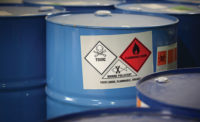Imagine that the unthinkable happens, and a fire breaks out in your server room. Are you ready to deal with it? Your data is backed up by a third-party service, your other branch location can keep the website running, and the fire department is on its way.
Oh, that's right – you need to get all your people out of the building safely. Unfortunately, you have prepared all your business assets for disaster without thinking about the safety of your employees and customers.
Effective preparation beforehand comes by breaking down the process into these five steps:
1 Get started now.
The absolute worst thing you can do is to keep putting it off, because you never know when a disaster will strike. Start by designating someone to head up your preparedness efforts, with other people to help as needed depending on the size of your company.
2 Identify your problem areas.
Evaluate your facility for potential evacuation routes. Keep in mind that you need accessible pathways for wheelchairs, and the elevators will not be usable in the event of emergency. You will also want to avoid having employees evacuate through potentially dangerous areas, such as chemical storage or rooms housing high-voltage equipment. Even narrow hallways can prove difficult for people to travel through quickly.
3 Prepare your plan.
Armed with knowledge of your specific facility, it's time to actually draw up your plan. The right tools can make this easy, such as purpose-built software. Look for something that doesn't require specialized training to operate. Your plan should be simple, in few colors to make it quicker to understand – and not just for people familiar with the office, but for visitors as well. You may need to create several maps for different areas. And don't forget to designate gathering areas, to make it easier to ensure everyone's safety.
4 Put it into practice.
A plan that isn't executed and practiced is useless. Hang your evacuation maps in visible, well-trafficked areas to maximize visibility. And even though your employees may grumble, you should drill them regularly. Not only will this allow for faster response in a real emergency, but it will help you identify flaws in your plan and allow you to make necessary changes.
5 Get additional education.
Familiarize yourself with additional resources that are available to help you prepare for emergencies. FEMA's Emergency Management Guide for Business and Industry is a good place to start. You may also want to participate in the Red Cross Ready Rating™ program, which is a free resource available for businesses.
Whether you already have a plan in place that could use some refreshing, or you're beginning from the ground up, don't wait to make the necessary preparations for an emergency at your office. Not only is it the right thing to do on a personal level, but it makes good business sense. Your staff will be safer, and any interruption to your operations caused by an emergency will be reduced as you efficiently execute your emergency plan – even though you hope you never have to.



